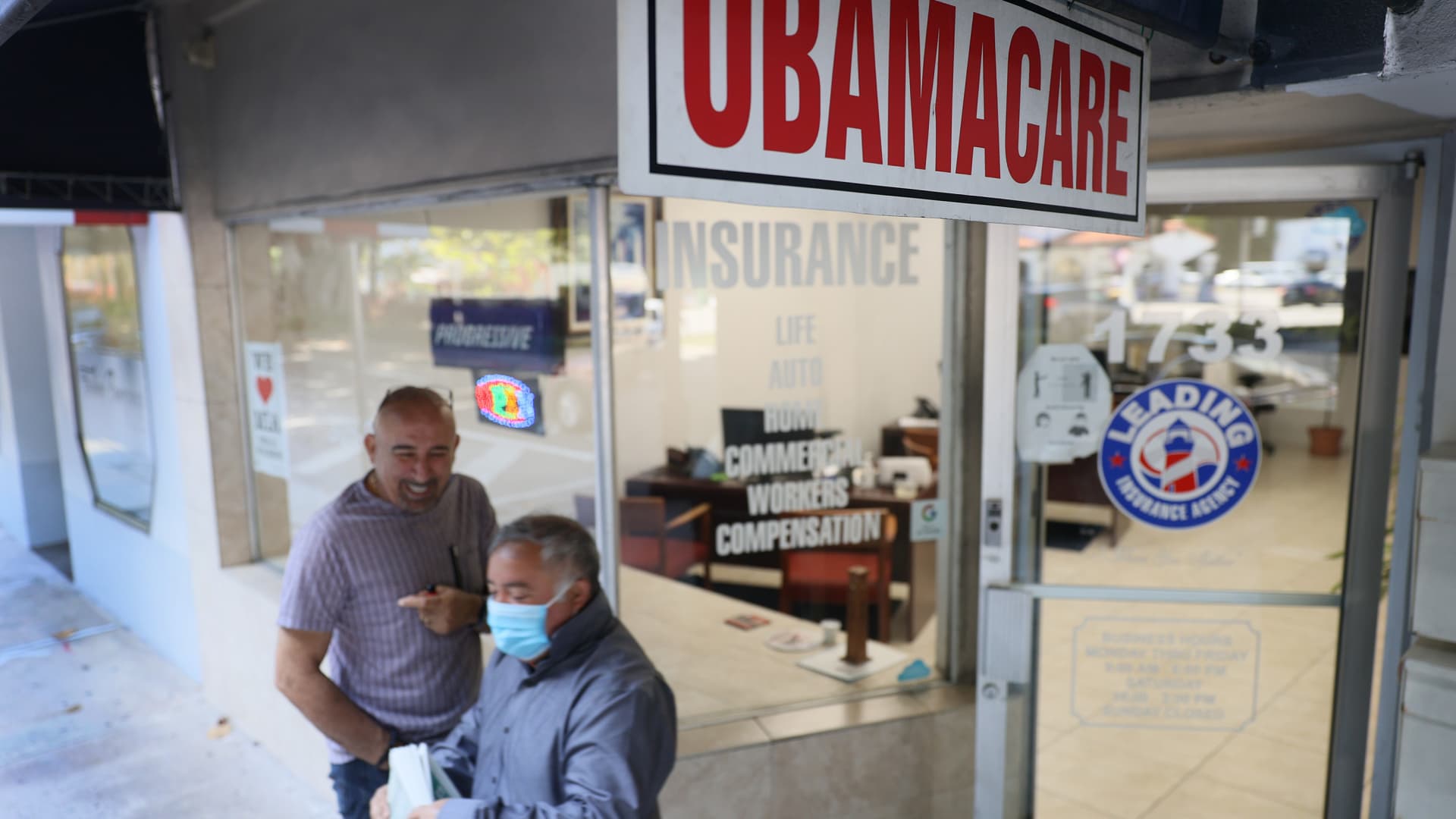
The number of people in the U.S. without health insurance declined during the Covid-19 pandemic even as millions of people lost coverage through their employers due to layoffs.
The uninsured rate in the U.S. for people under age 65 dropped from 11% in 2019 to 10.5% in 2021, according to a report released Friday by the Health and Human Services Department.
By the first quarter of 2022, the uninsured rate dropped to an all-time low of 8%, according to the report. It then rose slightly to 8.6% in the second quarter of 2022, HHS said.
The uninsured rate dropped despite a huge spike in unemployment in early 2020 that resulted in an estimated 1.6 million to 3.3 million people losing coverage through their employers, according to HHS.
But pandemic health policies created a safety net for people who lost private coverage and made it easier for them to find insurance.
Congress basically barred states from kicking people off Medicaid during the public health emergency, in exchange for increased funding for the states. Medicaid enrollment swelled by more than 20 million from February 2020 through September 2022 as a consequence.
But these Medicaid protections are coming to an end soon. Millions of people are expected to lose coverage they gained through the program. Federal spending legislation passed by Congress in December allows states to start kicking people off Medicaid in April if they no longer meet eligibility requirements.
HHS has estimated that up to 15 million people could lose Medicaid as pandemic-era protections are wound down and the program returns to normal operations. Many of these people are expected to transition to Obamacare marketplace coverage.
Enrollment in Obamacare through the marketplaces has also increased during the pandemic due to a special enrollment period in 2021, expanded tax credits and more funding for outreach to those who are eligible, according to HHS.
Nearly 16 million people have signed up during the current enrollment period, a 13% increase over last year. Three million of them are getting covered through the marketplace for the first time. The current open enrollment period ends on Sunday.
The HHS estimates for the uninsured from 2019 through 2021 are based on data from the American Community Survey, which collects information from 3.5 million households in the U.S. The 2022 estimates come from the National Health Interview Survey, which uses a much smaller sample of more than 17,000 people.







